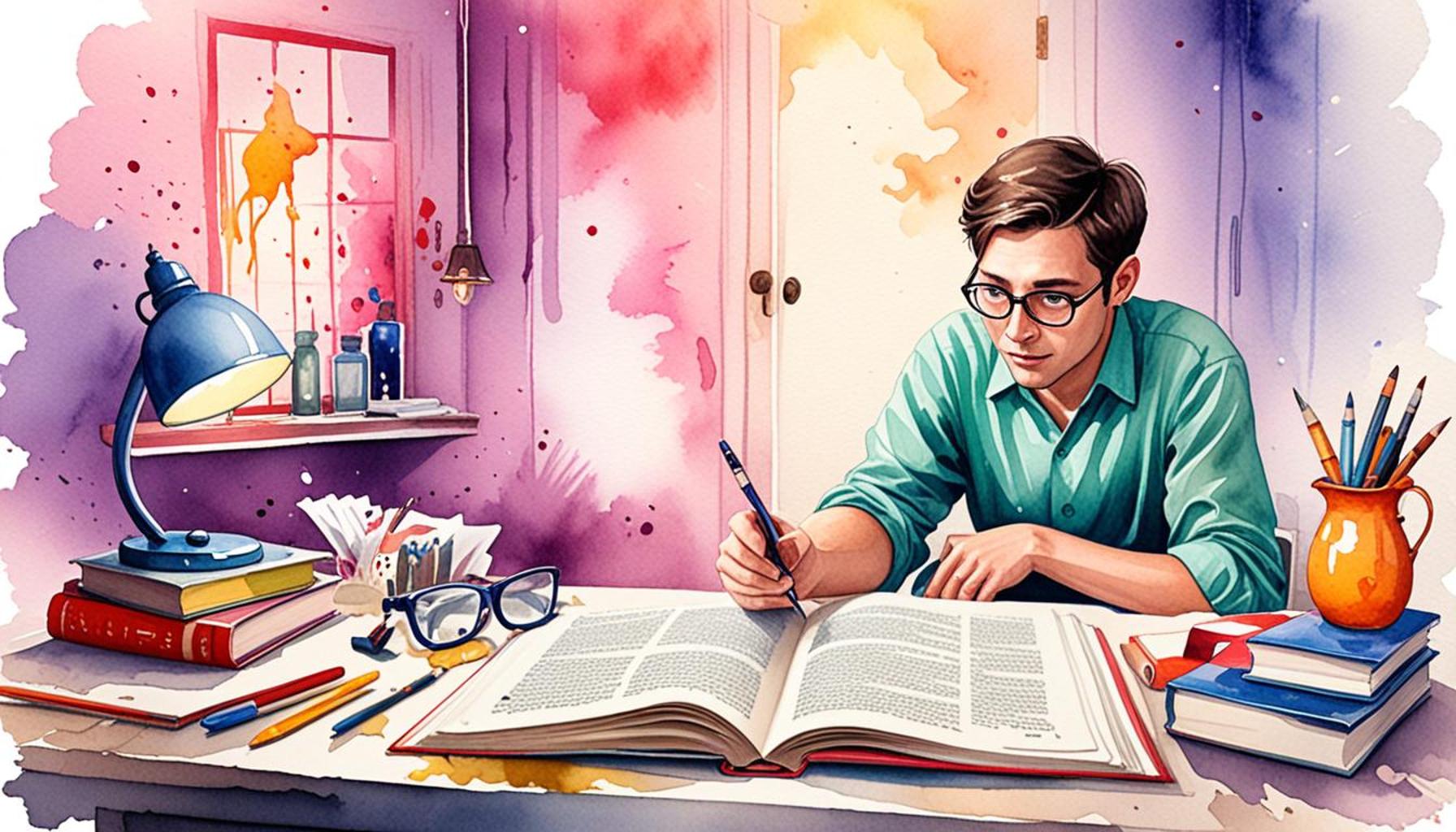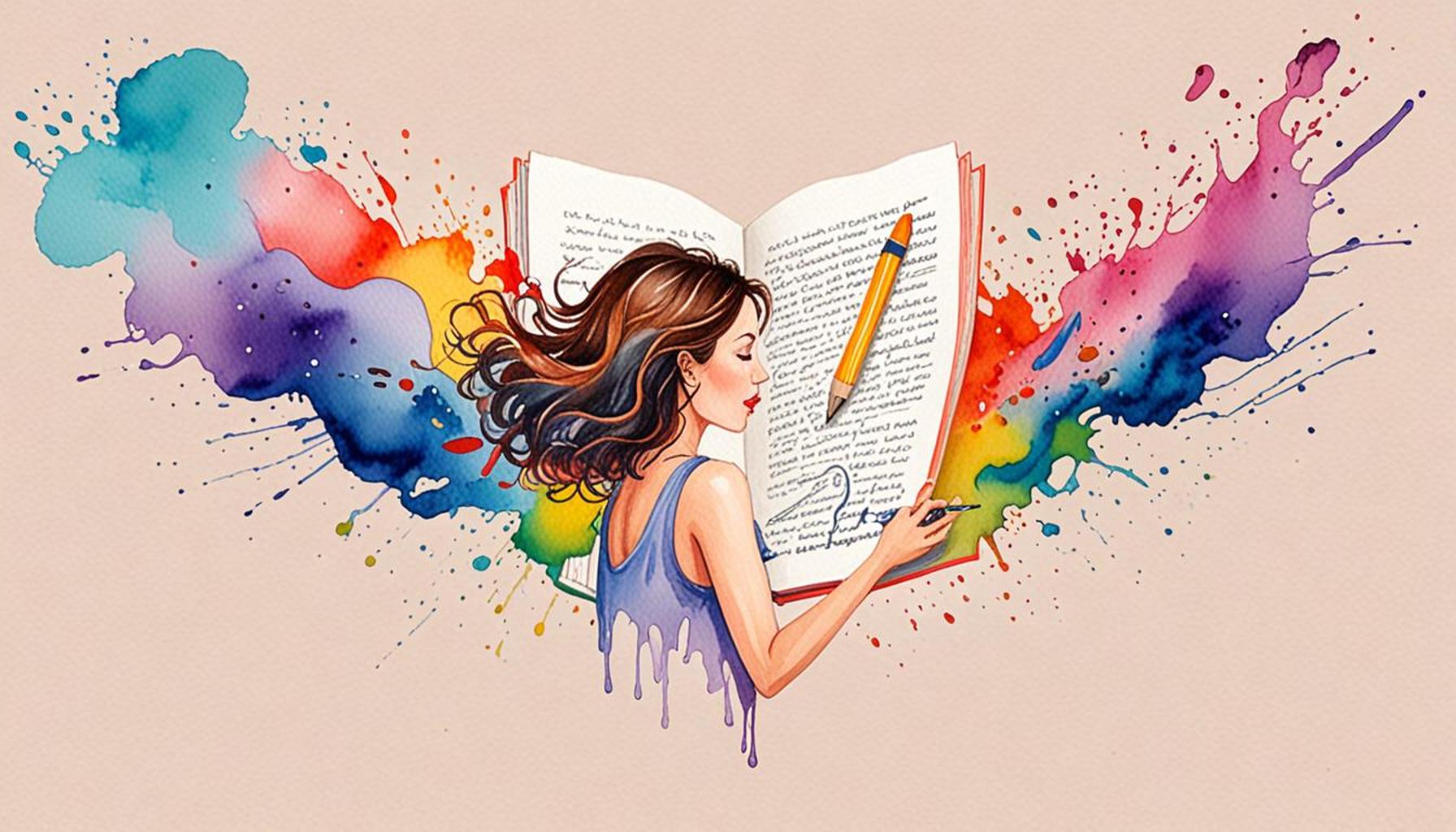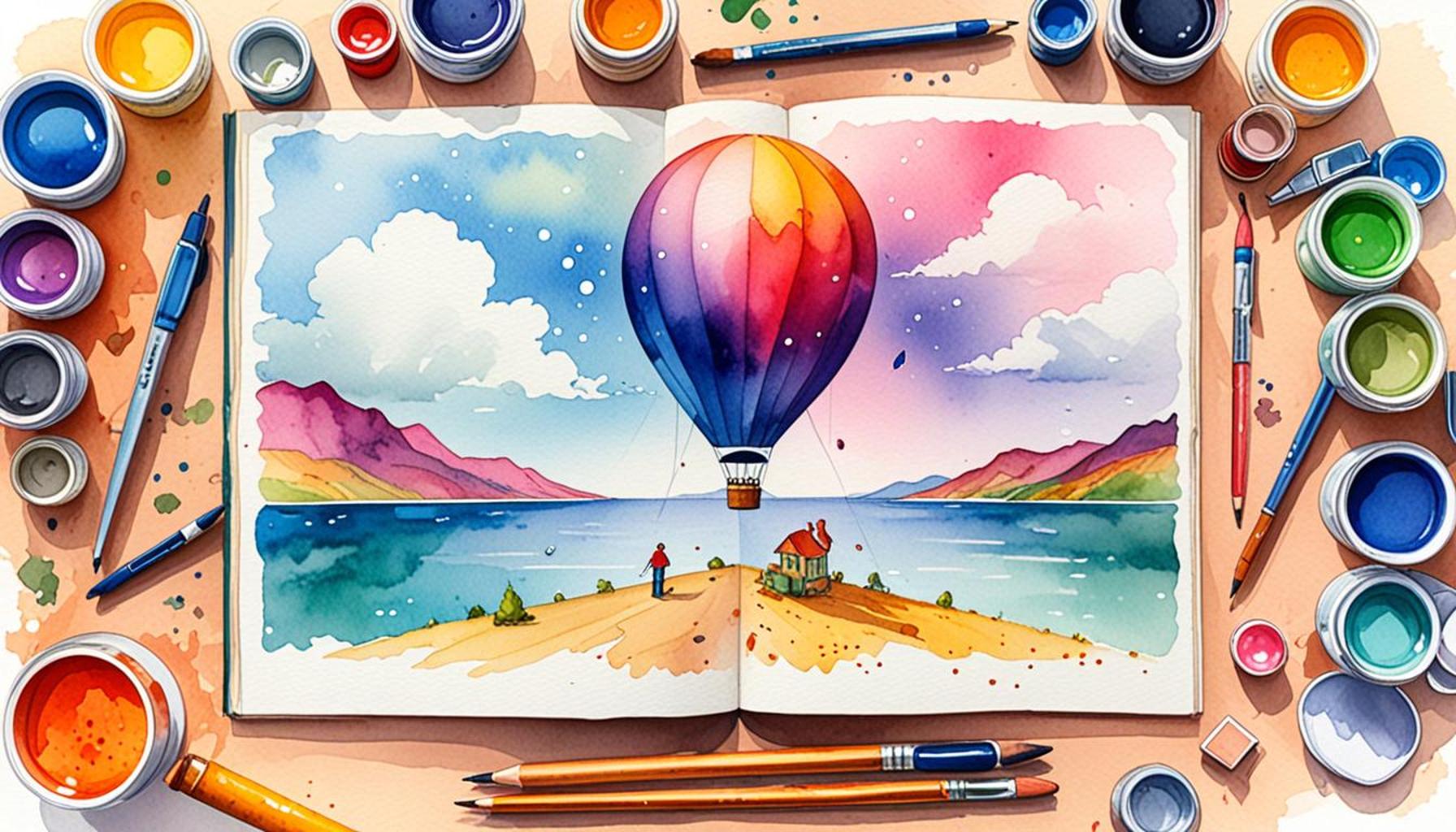Visual Writing: Incorporating Images and Descriptions to Enrich Your Narratives
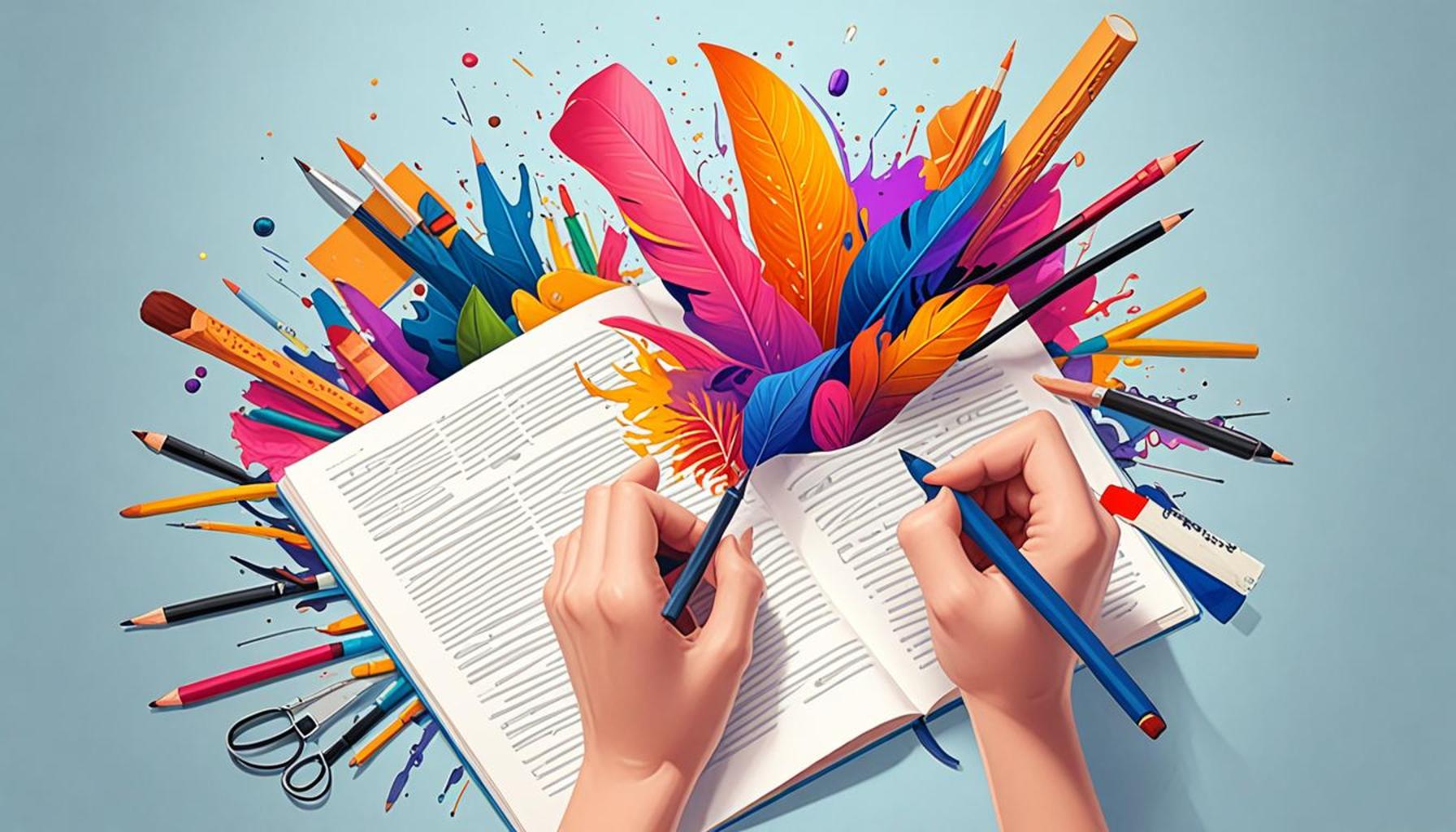
Unleashing the Power of Visual Writing
In today’s fast-paced world, where information is abundant and attention spans are shorter than ever, the fusion of text and imagery is proving to be more than just a trend; it’s a transformative technique in storytelling. The connection between words and visuals amplifies the impact of narratives, making them more engaging and relatable. In Nigeria, a country rich in diversity and cultural expressions, this integration of visual elements can elevate traditional storytelling to remarkable heights, captivating audiences in unexpected ways.
One of the primary ways visual writing leaves a lasting impression is through:
- Vivid Imagery: The use of descriptive language combined with stunning visuals can vividly transport readers to the vibrant markets of Lagos, filled with the sounds of haggling and the aroma of suya, or to the tranquil waters of the Niger Delta, where fishing boats glide against a backdrop of lush greenery. This strategic combination not only paints a picture but evokes emotions, making the reader feel part of the experience.
- Emoji and Symbols: The prevalence of social media in Nigeria has made emojis an essential part of communication, especially among younger audiences. By incorporating these relatable symbols, writers can swiftly convey complex emotions and reactions. A simple heart emoji can signify love, while a thumbs-up can indicate approval, bridging the gap between different generations and enhancing the emotional resonance of written content.
- Infographics: In a nation celebrating its rich tapestry of over 300 ethnic groups, the challenge often lies in presenting this complexity in an engaging manner. Infographics serve as an effective tool to visualize data, displaying information about each ethnic group’s culture, languages, and traditions in an attractive format. This makes intricate details not just accessible but also captivating to the audience.
Incorporating images does not merely beautify texts; it substantially enhances comprehension and retention. Visual elements act as mental cues, helping readers to recall the key points of a narrative long after they have finished reading. As Nigerian authors, bloggers, and content creators explore these innovative techniques, their narratives can evolve, drawing in diverse audiences in a way that text alone may not achieve.
Are you curious about how visual writing can reshape the content you consume? This compelling journey into a dynamic form of expression is at your fingertips. Discover how the infusion of rich imagery and thoughtful descriptions can breathe life into your storytelling, ensuring it resonates and leaves a lasting impression.
LEARN MORE: This related article may interest you
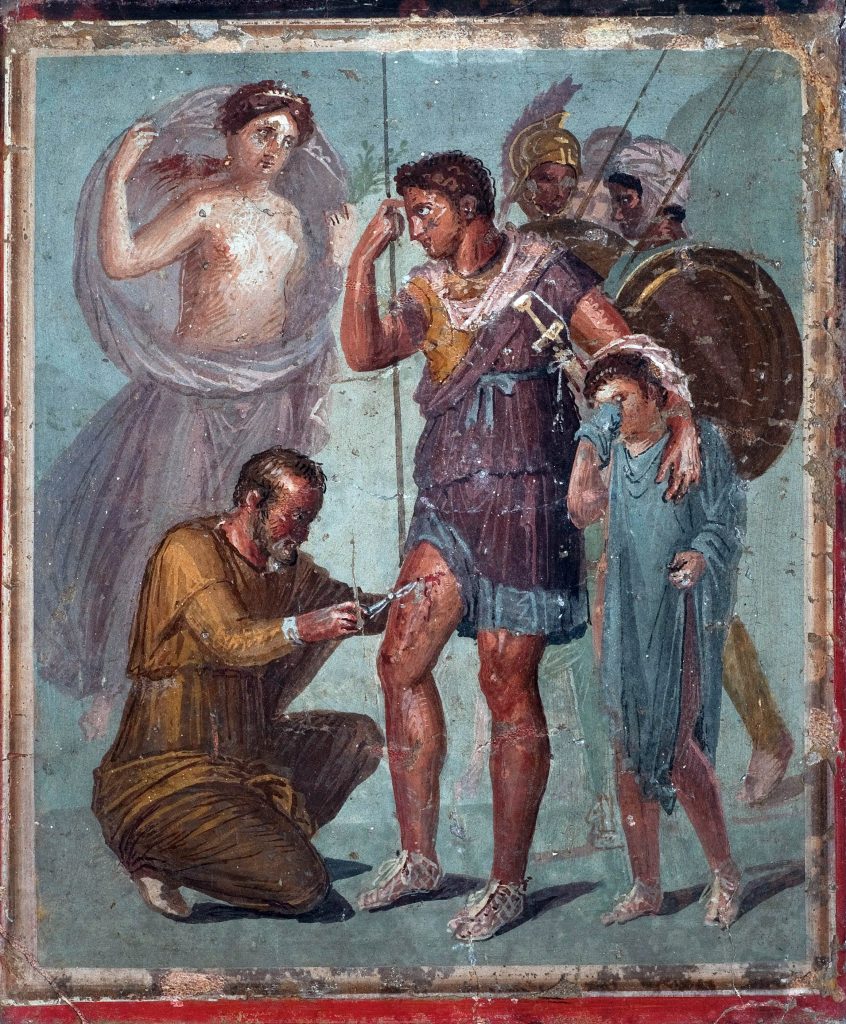
Enhancing Stories with Visual Elements
At its core, visual writing is about much more than just inserting pictures into a piece of writing; it’s about weaving a rich tapestry of words and images that interact seamlessly to enhance the reader’s experience. When writers deliberately combine vivid descriptions with appropriate visual content, they craft an immersive environment that invites readers into their world. In the context of Nigerian storytelling, where history and local culture run deep, utilizing such techniques can amplify resonance and build stronger connections with readers.
One vital aspect of visual writing is the role of descriptive language. Descriptions that are rich and evocative serve as a gateway for readers, allowing them to visualize and emotionally connect with the narrative. For instance, consider describing a traditional Nigerian festival: instead of simply stating that the event is lively, a writer can paint a detailed picture of the jubilant dancers adorned in vibrantly colored attire, their rhythmic movements accompanied by the energetic beats of drums echoing in the air. Such descriptive writing ignites the senses and invites engagement, turning a passive reading experience into an active exploration of the story.
Incorporating strong visuals—whether they are photographs, illustrations, or infographics—can complement and enhance these descriptions. Here are a few benefits of combining imagery with text:
- Improved Understanding: Visual elements can clarify complex ideas or viewpoints. For instance, when discussing the various cultural practices of the Yoruba, Hausa, and Igbo people, infographics can distill detailed information into easily digestible formats.
- Increased Engagement: High-quality images capture attention and invite readers to delve deeper into the content. A captivating photograph of a bustling Nigerian marketplace can create a sense of place and spark curiosity.
- Emotional Connection: Images can evoke feelings that words sometimes struggle to convey. A portrait capturing the joyful smiles of children playing in a local community can resonate with readers on a personal level, reinforcing the narrative’s emotional undertones.
Effectively merging text with visual storytelling is not merely an enhancement; it represents a paradigm shift in how stories are told and received. The human brain processes visuals significantly faster than text, which is a critical factor for writers aiming to leave an impact in today’s rapidly consuming digital world. Nigerian content creators could leverage this neuroscience by crafting narratives that resonate across various platforms—be it blogs, social media, or literary works—through engaging visuals.
As we explore further, we will examine methods and techniques on how to master this art of combining imagery and descriptions, enabling writers to transform their narratives into a fluid, multi-dimensional experience that captivates diverse audiences across Nigeria.
| Advantages | Description |
|---|---|
| Enhanced Engagement | Visuals draw the reader’s eye, leading to a more captivating experience. |
| Improved Comprehension | Images paired with descriptions help clarify complex ideas, making content accessible. |
| Memory Retention | Visual content significantly boosts the likelihood of information recall long after reading. |
| Aesthetic Appeal | Well-chosen images enhance the overall look of narratives, attracting readers. |
Incorporating visuals into writing does not merely embellish stories; it transforms them into multi-dimensional experiences. The strategic use of images can amplify storytelling, creating emotional connections and establishing context more effectively. When authors utilize visual writing, they unlock the potential to guide readers through the narrative landscape, enriching their grasp of themes and characters. Additionally, descriptive captions serve as a powerful tool, merging visual elements with written context to evoke deeper understanding. This method not only stimulates interest but also enhances retention of information, making it an essential practice for writers aiming to captivate their audience. Furthermore, studies indicate that well-integrated visuals can increase the shareability of content, expanding the reach and impact of narratives across various platforms. Ultimately, the fusion of images and descriptions is a compelling strategy to engage and inform, making it invaluable for storytellers in today’s visually driven landscape.
LEARN MORE: This related article may interest you
Techniques for Mastering Visual Writing
To excel in visual writing, it is imperative for writers to develop and refine a set of techniques that enable the seamless integration of imagery and descriptions. These methods not only elevate the narrative but also tailor it to engage audiences in the Nigerian context. By understanding the strategic use of visual elements, writers can enhance their storytelling prowess.
One effective technique is the implementation of metaphors and similes to create impactful images with words. Instead of merely describing a sunset, for instance, a writer might say, “The sun dipped below the horizon like a generous pot of jollof, spilling rich orange hues onto the canvas of the sky.” Such figurative language allows readers to visualize scenes vividly while also connecting with culturally relevant references.
Moreover, incorporating contextual imagery greatly enriches narratives. Contextual imagery refers to visuals that are pertinent to the specific culture, location, or tradition being portrayed. For example, when a writer discusses the significance of the Osun-Osogbo festival, they might include images of the sacred grove, adorned with colorful fabric and local artisans engaged in traditional crafts. This not only offers a window into the festival’s vibrancy but also deepens the reader’s understanding of its cultural significance.
Employing storyboards is another useful strategy for visual writing. A storyboard provides a visual outline that can map out the progression of a narrative, helping writers anticipate where descriptions will coincide with images. This is particularly useful when crafting complex narratives involving multiple character arcs or settings. For a writer focusing on the rich tapestry of Nigerian folklore, storyboarding allows for the effective layering of various tales while balancing image placement with textual content.
Creative use of color palettes in written descriptions can further elevate visual writing. Colors evoke specific emotions and can shape a reader’s interpretation. For instance, describing a Lagos evening as “a rusty orange fading to deep indigo” can evoke warmth and nostalgia, providing a sensory experience that mere words cannot achieve. By utilizing color effectively, writers can enhance the mood and tone of their narratives, making them more relatable and engaging for their audience.
Finally, integrating interactive elements like video snippets or audio clips can transform static narratives into dynamic stories. For instance, including a short video of musicians playing traditional instruments at a cultural festival not only captivates the audience but also immerses them in the auditory experience, further enriching the textual narrative. This multi-modal approach is particularly significant in the digital era, where audiences crave interactive content.
Writers seeking to master visual writing should remain attuned to the emotional resonance of their chosen images and descriptions. By carefully selecting visuals that align with the themes and messages of their narratives, they strengthen the overall impact. As the digital landscape evolves, writers in Nigeria can harness the power of visual writing to create narratives that not only inform but also inspire, explore deep-rooted cultural motifs, and foster connections among diverse audiences.
ADDITIONAL INSIGHTS: Expand your understanding here
Conclusion
In conclusion, visual writing emerges as a transformative approach that empowers writers to vividly engage their audiences, especially in the rich cultural landscape of Nigeria. By incorporating images and descriptive language into narratives, writers can create a more immersive experience that resonates on both emotional and sensory levels. The techniques discussed, from the use of metaphors and contextual imagery to storyboarding and color palettes, serve as invaluable tools in a writer’s arsenal, enabling them to weave intricate stories that resonate deeply with readers.
The interplay of visuals and text not only enhances understanding but also builds connections to the unique cultural motifs that define Nigerian storytelling. As we navigate an increasingly digital world, integrating interactive elements becomes essential. It invites readers to engage with narrative content actively, fostering a richer appreciation for the stories being told.
Ultimately, as writers harness the art of visual writing, they open doors to new creative possibilities. They can explore and celebrate the diverse experiences within Nigeria’s cultural tapestry, allowing for narratives that are not only insightful but also profoundly relatable. For budding and seasoned writers alike, embracing this powerful storytelling technique is a remarkable path toward creating compelling narratives that inspire, educate, and entertain across generations. It is time to delve deeper, explore the visuals that dance in our minds, and bring them forth to illuminate the pages of our stories.

